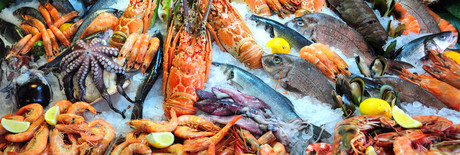Exactly what fish is this?

Canadian consumers may not know what fish they are eating, as University of Guelph researchers found fish is mislabelled before it is imported into Canada and throughout the supply chain.
A study conducted in collaboration with the Canadian Food Inspection Agency (CFIA) found 32% of fish was mislabelled and the number of incorrectly identified samples became compounded as the samples moved through the food system.
Lead author Professor Robert Hanner, from the Department of Integrative Biology at U of G, said: “It seems it’s not isolated to foreign markets, but it’s also happening at home.”
U of G researchers examined 203 samples from 12 key targeted species collected from various importers (51), processing plants (11) and retailers (141) in Ontario. Researchers used DNA barcoding, developed at U of G, to identify the samples.
Overall, 32% of the samples were mislabelled: 17.6% at the import stage, 27.3% at processing plants and 38.1% at retailers.
“The higher mislabelling rate in samples collected from retailers, compared to that for samples collected from importers, indicates the role of distribution and repackaging in seafood mislabelling,” said Prof Hanner.
“It’s either economically motivated — meaning cheaper fish are being purposely mislabelled as more expensive fish — or it’s inconsistent labelling regulations between countries and the use of broader common names being used to label fish, instead of scientific species names, that are leading to mislabelling.”
In Canada and the US, fish are labelled using a common name, such as tuna, rather than a specific scientific name, which Prof Hanner said creates ambiguity and allows for human error or fraud. He continued: “It also makes it more difficult to track species at risk or indicate if a fish is a species that has higher mercury content. At the end of the day, Canadian consumers don’t really know what type of fish they are eating.”
European countries that recently included species names along with common names have seen less fraud, and Prof Hanner suggested this might help curb the problem with fish imports. This study shows a need for verification testing at multiple points along the supply chain.
“The next step would be to follow one package from import to wholesale to retail and see what happens,” he said.
The study was published in the journal Food Research International.
Digital labelling trial proposal in NZ for certain imported food
The New Zealand Minister for Food Safety is seeking feedback on a proposal to enable a trial of...
CCEP's reverse vending machine rollout
Coca-Cola Europacific Partners' first RVM has opened in Moorabbin, with others planned across...
Smarter 'natural' packaging for food of the future
From food waste sugars into natural plastic films, researchers at Monash University are creating...











